Mobile Application
FireHydrant offers a mobile application for receiving Alert push notifications as well as responding to Alerts and viewing information.
The mobile application is offered on the following app stores/marketplaces:
Setting Up
When first onboarding to the FireHydrant mobile application, you'll receive a detailed onboarding. This includes configuring permissions, Do Not Disturb overrides, and other required features for FireHydrant to ensure timely delivery of your alerts, whether through push notifications or WhatsApp, Voice, or SMS.
Ensure you follow the onboarding instructions carefully.
Navigation and usage
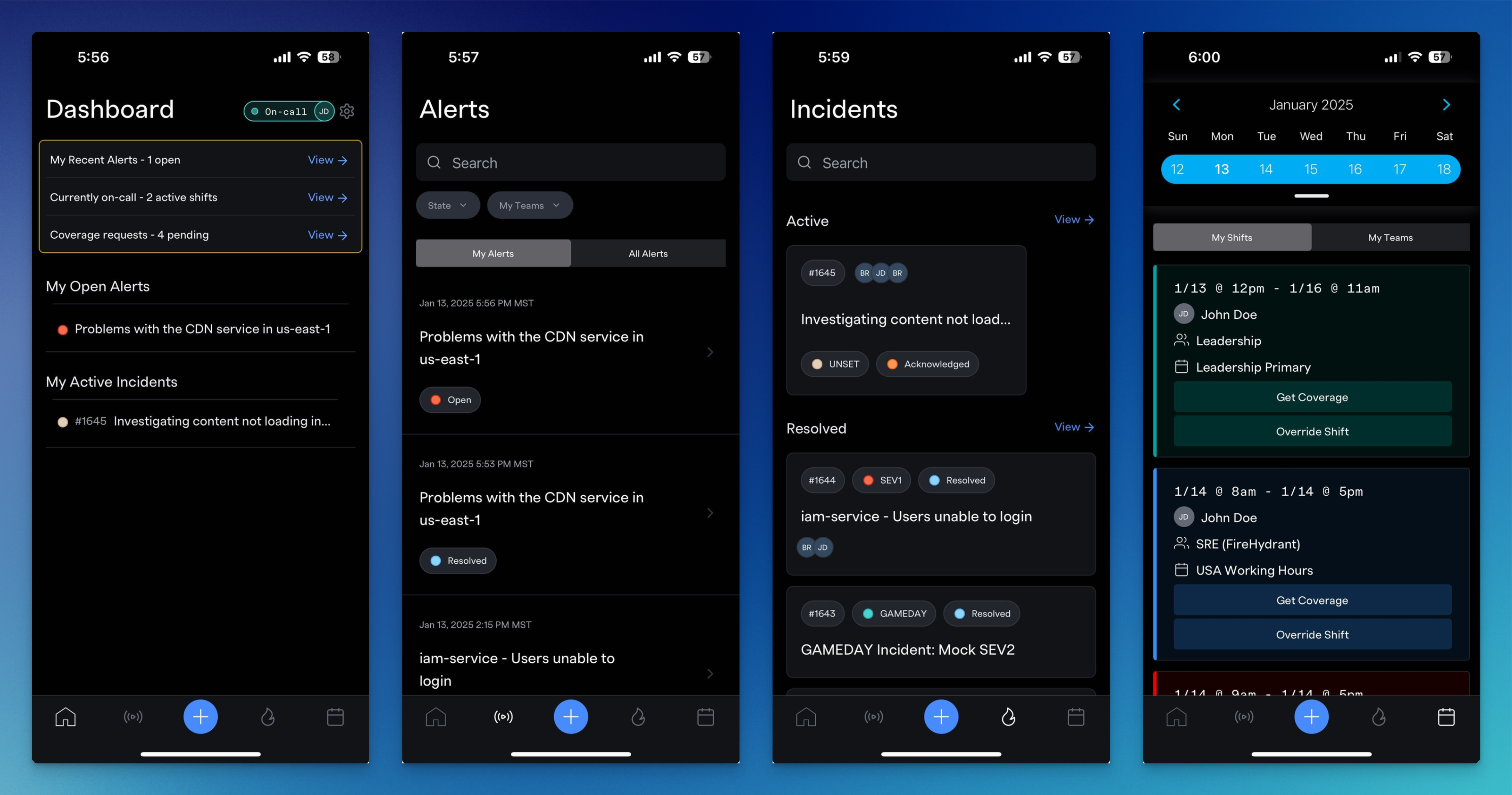
Screenshot view of each mobile app page
Navigation is at the bottom of the application. From left to right:
- Home - You can view all key information on this page including any current shifts you're actively on-call for, your open coverage requests, any open alerts assigned to you, and active incidents you're assigned to. By viewing your active shifts or coverage requests, you can also take additional actions like editing coverage requests or configuring overrides.
- On the home page, you can also navigate to your Settings on the top right. Here, you can configure various things like phone numbers, notification settings, and configure alert sound and volume preferences.
- Alerts - You can view all alerts assigned to you as well as all alerts across your organization on this page. You can also search for specific alerts and filter by teams and alert status. Clicking into an alert will show that alert's details and the full timeline of activity on said alert.
- New Alert - The '+' button allows you to manually create an alert through the mobile application and page specific targets. See the next section.
- Incidents - Like with Alerts, you can browse incidents on this page. Note that currently we don't yet support taking action on incidents, like resolving them or updating details, from the mobile application. However, you can find links on incidents such as to meeting bridges, incident channels, and more.
- Schedules - This page shows all of the current ongoing shifts for all of the schedules you are assigned to. You can also switch tabs to view any shifts from all teams you're on. You can refine the list of shifts by week by dragging down the calendar and selecting a different week.
Creating an Alert/Paging
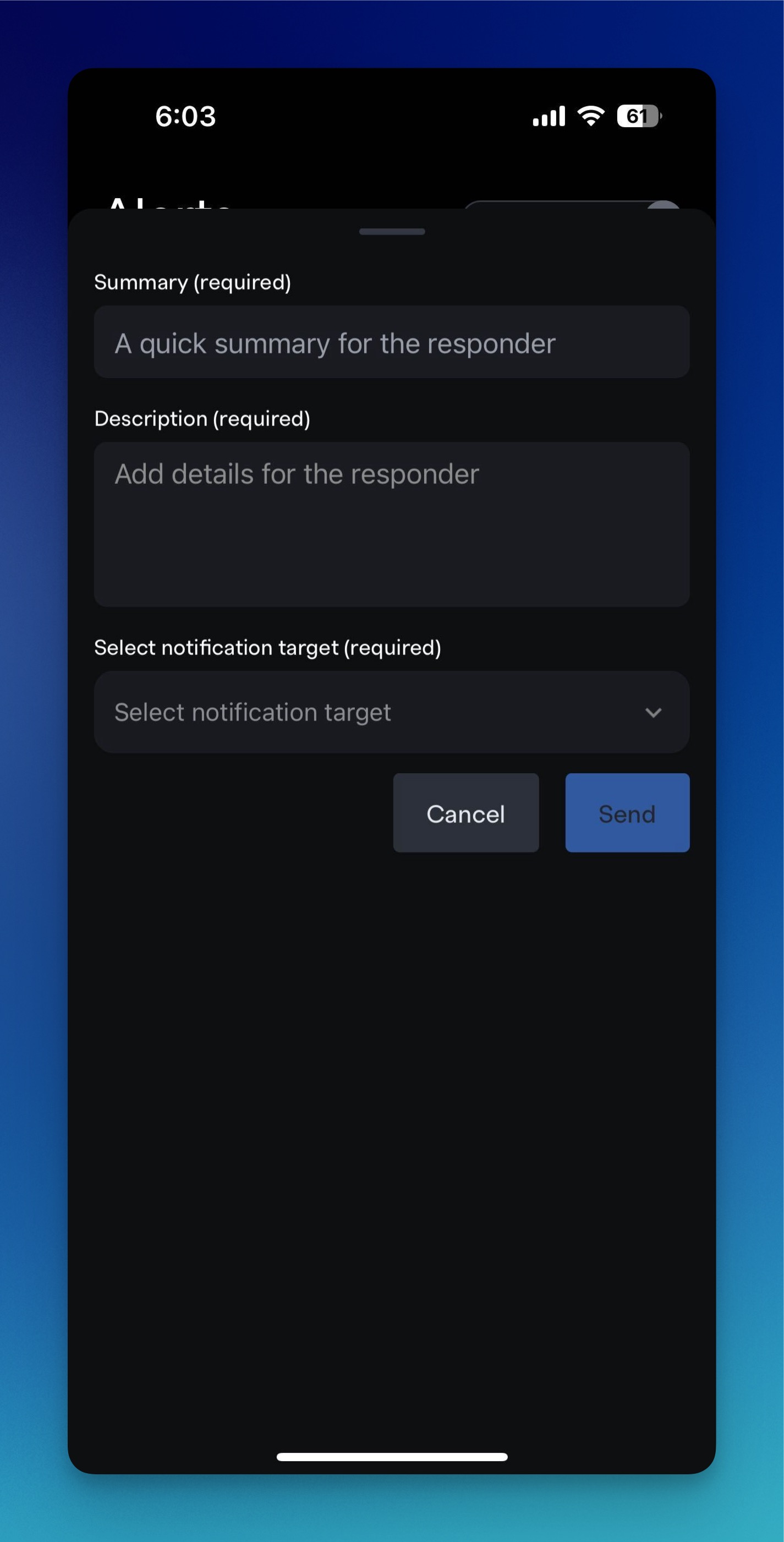
Creating an alert via mobile application
FireHydrant allows manually creating alerts/pages via the web UI as well as via the mobile application. In the mobile application, this is done via the '+' button, which will open a new screen for you to fill out information about the page.
Like the web interface, creating an alert from the mobile application allows filling in basic details such as the alert summary, a description, and then a specific target - you can notify Teams (which routes to the Team's default escalation policy), Escalation Policies, On-Call Schedules, and specific Users.
Responding to Alerts
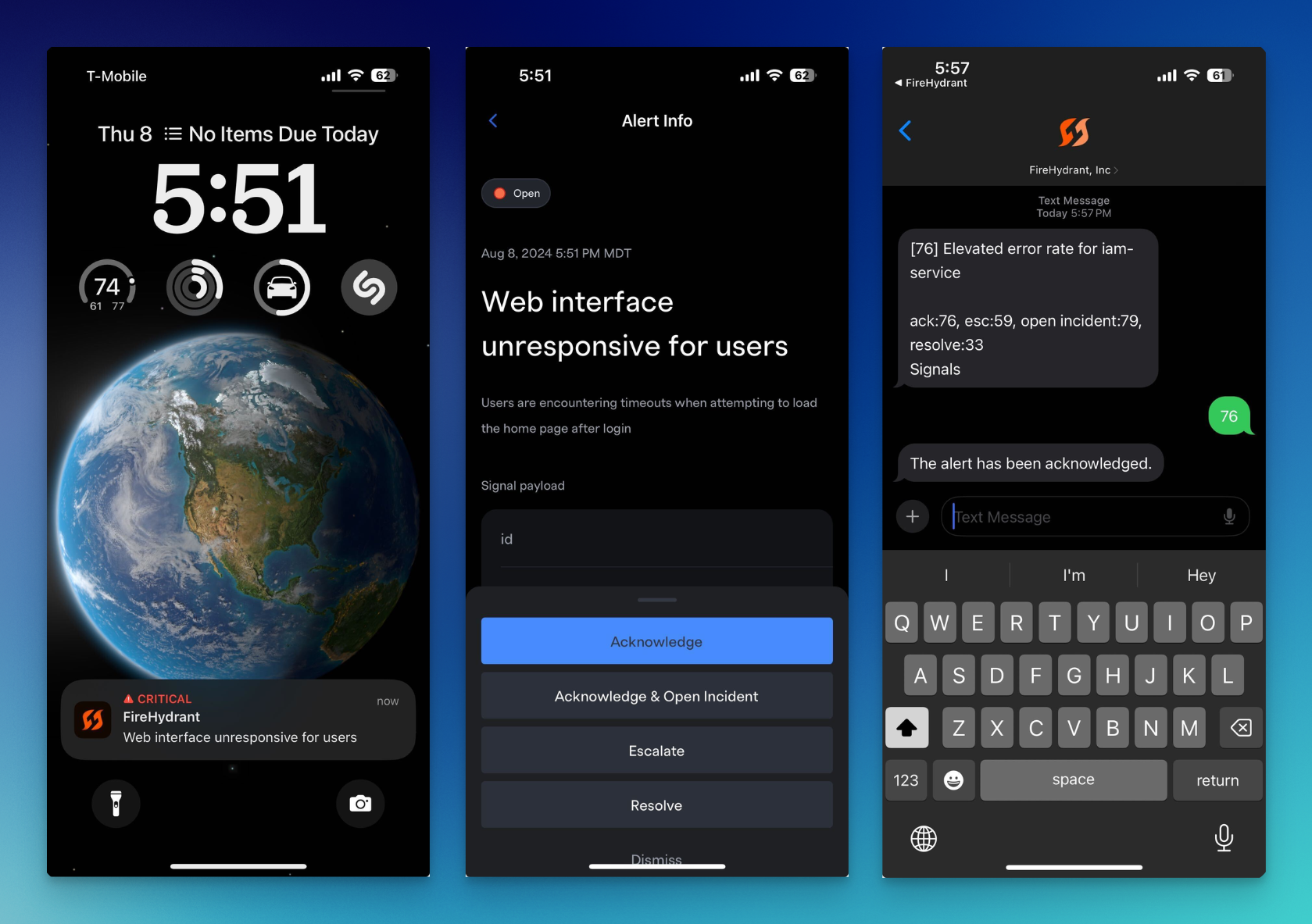
Responding to a push notification and an SMS alert
If you receive SMS, Voice, and WhatsApp alerts, then you can respond to those alerts via those mediums. For example, a text message alert can be responded to with the appropriate numbers specified and a voice alert can be responded to with the correct number pad input.
Opening a push notifications will show the alert in the mobile application interface and present the user with buttons to take action on said alerts.
Requesting Coverage & Overrides
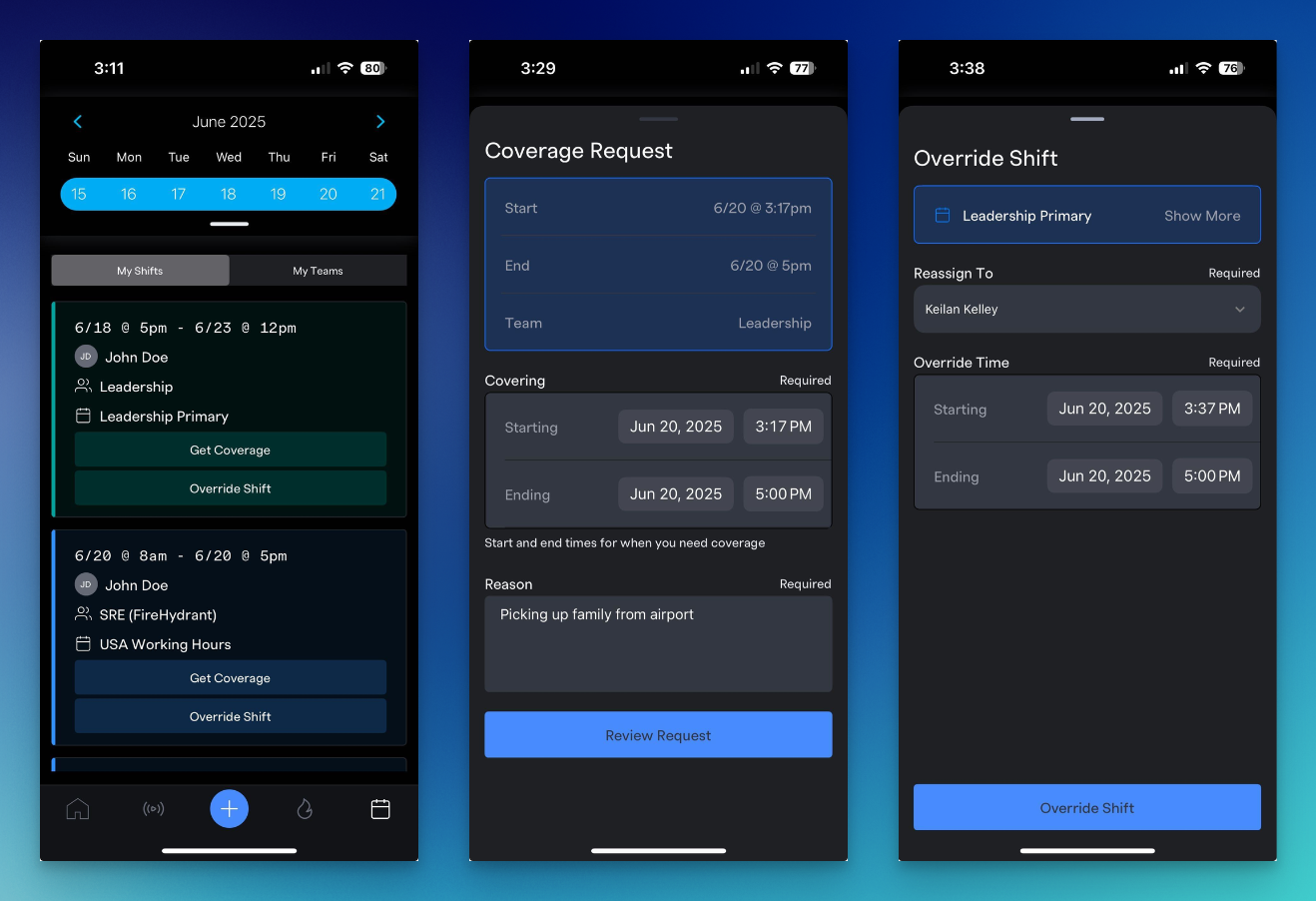
Coverage and Override flows
Request coverage and configuring overrides is easy in the FireHydrant mobile app as well. On the schedules page, you can directly view the shifts upcoming for you and your team(s). For your shifts, you should always be able to request coverage. However, only users who have the required permissions will be able to override shifts directly and configure the times and assignments.
Claiming Shifts
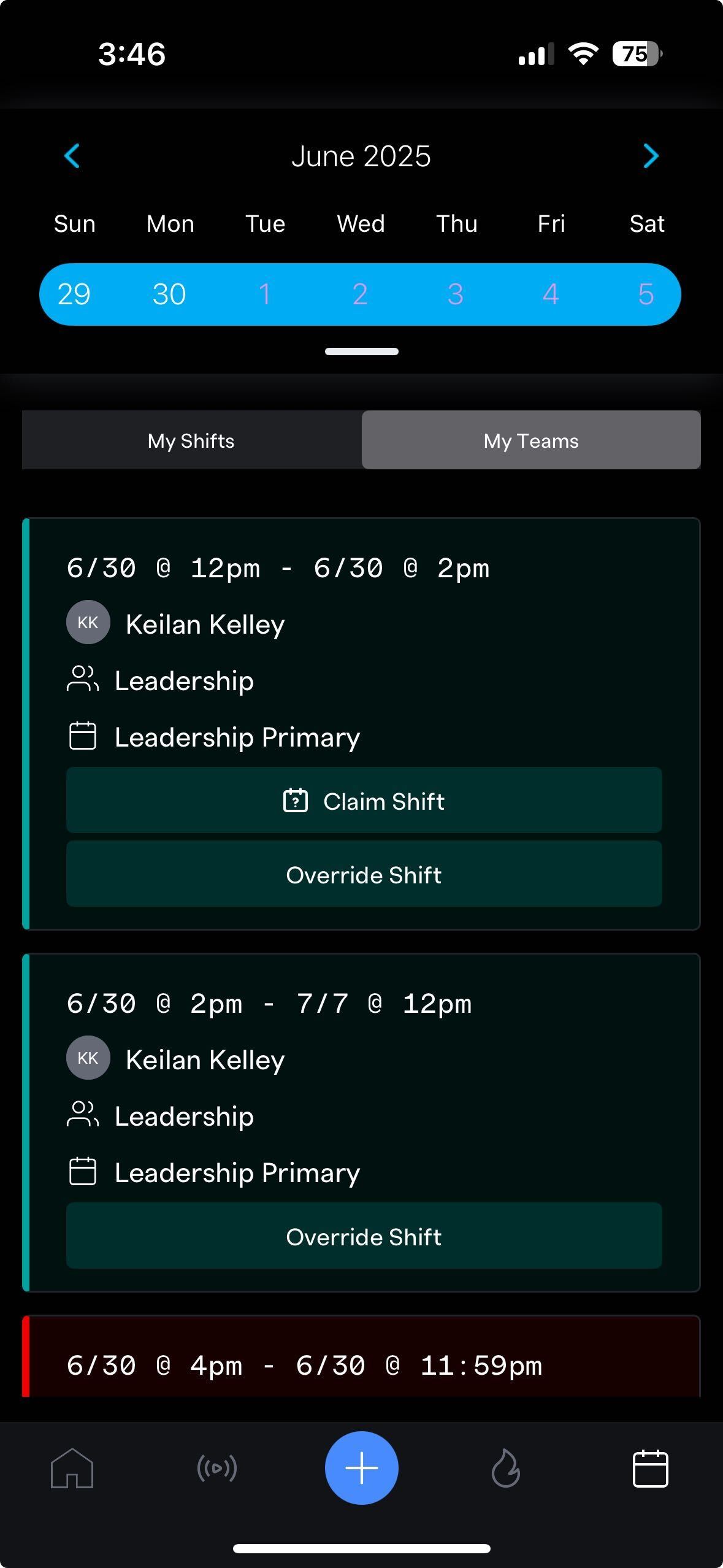
Open shifts or coverage requests can be found under My Teams
Just as easy, you can claim any open or unassigned shifts by clicking "Claim Shift" on the shift within the mobile application. You will typically find these under My Teams, where you will see shifts across all users for all teams you are on.
Delivering Feedback
FireHydrant's mobile application makes it easy to receive, manage, and respond to Alerts using your phone. Any questions or feedback can be directly submitted to our Support team.
Updated 19 days ago
